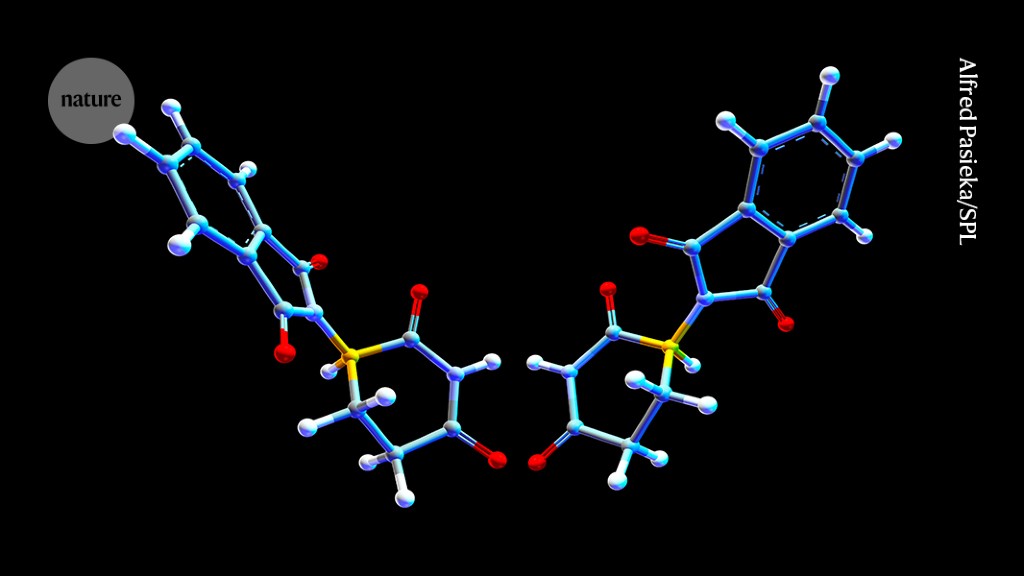The two enantiomers of thalidomide have different effects inside the body.Credit: Alfred Pasieka/SPL
Chemists have shown it is possible to use mass spectrometry — a technique commonly used to identify molecules by mass — to separate chiral molecules, those that exist as different forms with identical atoms but mirror-image structures that can’t be superimposed on each other.
The technique, described today in Science1, could one day have applications in drug discovery. The different versions of chiral molecules — called enantiomers — often have very different properties. The drug thalidomide showed this to tragic effect: one enantiomer is a sedative, but the other causes congenital disabilities when taken during pregnancy. As a result, separating enantiomers is a crucial part of drug discovery, but it is often laborious. Current methods require specialist equipment and different protocols for each pair of enantiomers.
Ions apart
A team of researchers led by Zheng Ouyang at Tsinghua University in Beijing managed to use mass spectrometry to separate enantiomers for a class of chiral molecules called binaphthyl-triflates.
The researchers put pairs of these propeller-shaped molecules into a mass spectrometer, where they were vaporized, ionized and transported to a component called an ion-trap mass analyser. The team then applied alternating currents to the ions, sending each enantiomer spinning on a slightly different path, on the basis of its chirality.
“When they collide with background gas molecules, different enantiomeric forms experience different effects due to the collisions,” says Ouyang, which separates them. Then, when they are ejected at the other end of the spectrometer, the ions come out one at a time and can be detected separately. The machine can also determine the proportion of each enantiomer in a mixture — known as the enantiomeric excess (e.e.) and expressed as a percentage.
“Chemists can take a dip of a crude reaction product as sample, send it to a mass spectrometer, get both the e.e. of the enantiomers in addition to the confirmation of the molecular structures within a minute,” Ouyang says. Once scaled up, the mass-spectrometry system could also be used to prepare pure samples of enantiomers in larger quantities, he adds.
“I love this work,” says Perdita Barran, director of the Michael Barber Centre for Collaborative Mass Spectrometry at the University of Manchester, UK. She says that being able to simply separate enantiomers has been a “big quest”. “A go-to method to separate enantiomers has relevance for drug discovery and design,” she says.
